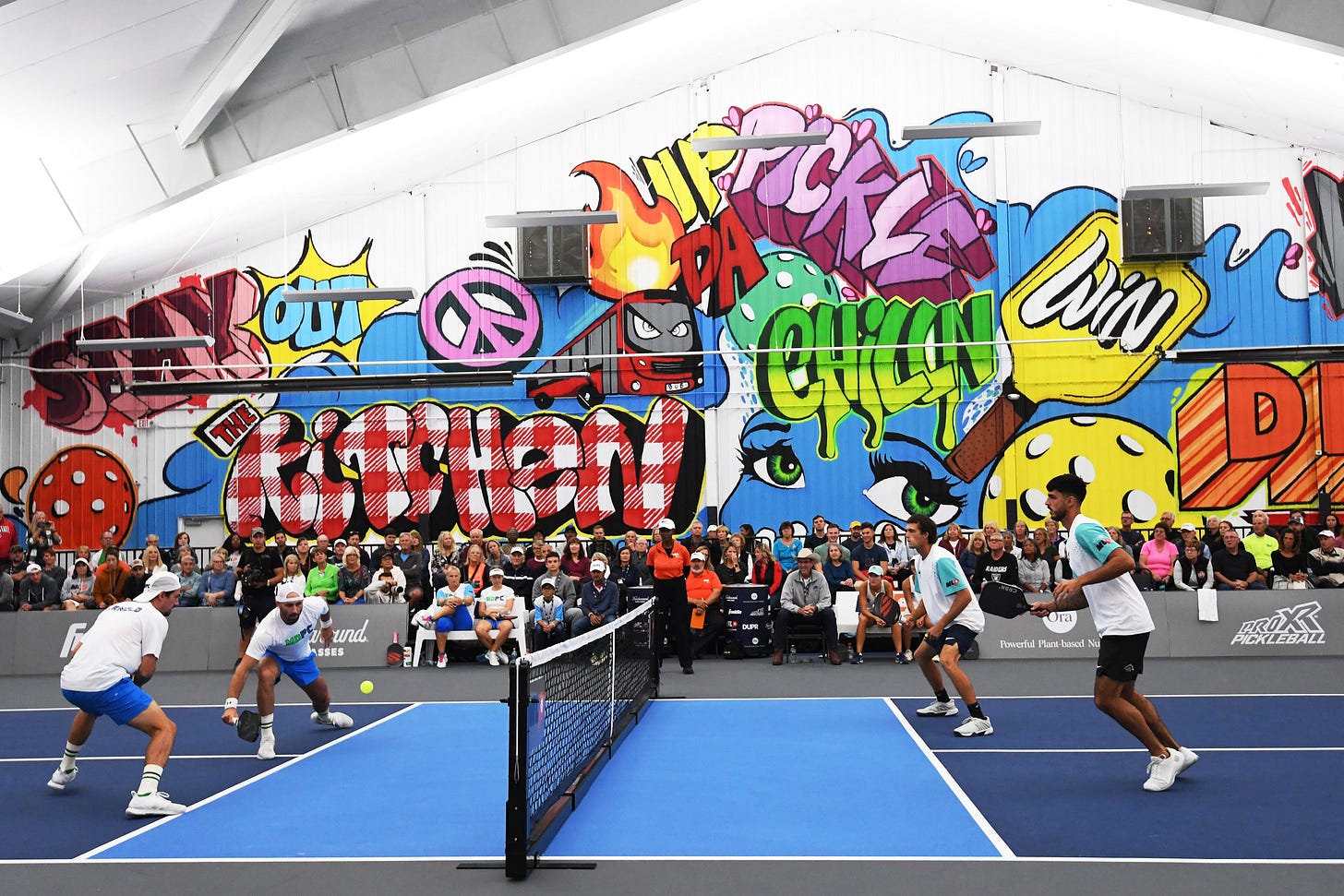The Wide World of Made-Up Sports as TV Bets on Rookies
Pickleball to Power Slap: WBD, ESPN, NBCU & Netflix acquire rights to startup leagues, who's winning and why

ESG’s data-driven analysis for paid subscribers appears every other Thursday. He recently wrote about Tubi’s move into scripted originals; content libraries’ unsung role in streaming success; and how animation is making serious bank, almost no matter what.
The first-ever NFL game was played in 1920. The NBA tipped off in 1946. Over time, they joined Major League Baseball (1871) and the National Hockey League (1917) to become America’s four major sports. Given the 75-year span between their start dates, I couldn’t help but notice that two new sports leagues launched within 10 days of each other in January.
On Jan. 7, TGL, a new golf league from Tiger Woods and Rory McIlroy that combines the “traditional” game with simulated indoor play, aired its first match on ESPN (and ESPN+). Then on Jan. 17, Unrivaled, a new three-on-three professional women’s basketball league backed by WNBA stars Napheesa Collier and Breanna Stewart, former ESPN president John Skipper and Ashton Kutcher, among others, made its debut on TNT (and Max).
TGL and Unrivaled join a surprising number of new sports that have premiered in recent years:
In 2019, not one but two professional pickleball leagues began (PPA and APP), and another (MLP) launched in 2021. The PPA and MLP merged in 2022, and its investors include Eva Longoria, Kate Upton, Mark Cuban, Tom Brady and Patrick Mahomes. Games air everywhere from ESPN to CBS to Amazon.
In 2023, investors started Major League Cricket, a U.S.-based cricket league with funding from some business luminaries including Microsoft CEO Satya Nadella.
TGL joins at least three other golf startups: Saudi-backed LIV (2021), GOLFZON Tour (2024) and the Grass League (2024).
Or my favorite, Power Slap (2023), which is slap fighting. Yes, there is a professional slap fighting league with backing from the UFC, whose CEO is Ari Emanuel. Its matches air on the YouTube rival Rumble.
This is not even remotely a complete list! I didn’t even mention SailGP hydrofoil racing or Major League Fishing Bass Pro Tour. Between brand-new sports, new leagues challenging the stalwarts and new variations on old games, these emerging sports leagues have attracted a lot of investment and hope to build the next generation of sports fans. (Yeah, I know “made up” can sound like a pejorative, but some of these leagues really are creating brand new sports, like the TGL being a virtual/real mashup of golf. Or, again, slap fighting.)
As any of my readers know, I don’t usually go for well-hyped new businesses. Recall my skepticism of esports (professional videogaming), which had all these things until its bubble popped, as I chronicled last April. (Though it’s big in Saudi Arabia . . . no red flags there!) But something honestly fascinating is happening here as these startups are having a moment. The sheer volume says something about the market — both for the wannabe sports themselves and more interestingly, for the networks and streamers in league with them. (Pun intended.)
So let’s dig in to see what’s driving this trend and how Hollywood can capitalize on it.
In this article, I’ll tell you:
Why entertainment companies are so mad for sports (and the programming that loses because of it)
The one thing an emerging sports league can offer that “major” sports are unlikely to
What entertainment companies need from these startups
Whether TGL and Unrivaled are living up to those goals in the early going
The new deal structure that allows rights holders to profit from a growing league
How the content bubble led to the sports boom
What celebrity investors like Bob Iger are hoping for
How long it really takes to build a fan base for a new sport
The most underappreciated bundle of sports rights — and which companies are poised to acquire them
Why Networks and Streamers Like New Sports Leagues

A few factors have combined to drive this mini-boom in new sports leagues. To start with the most obvious:


